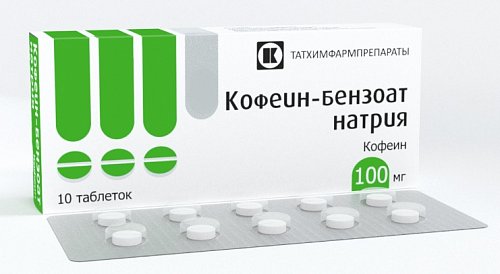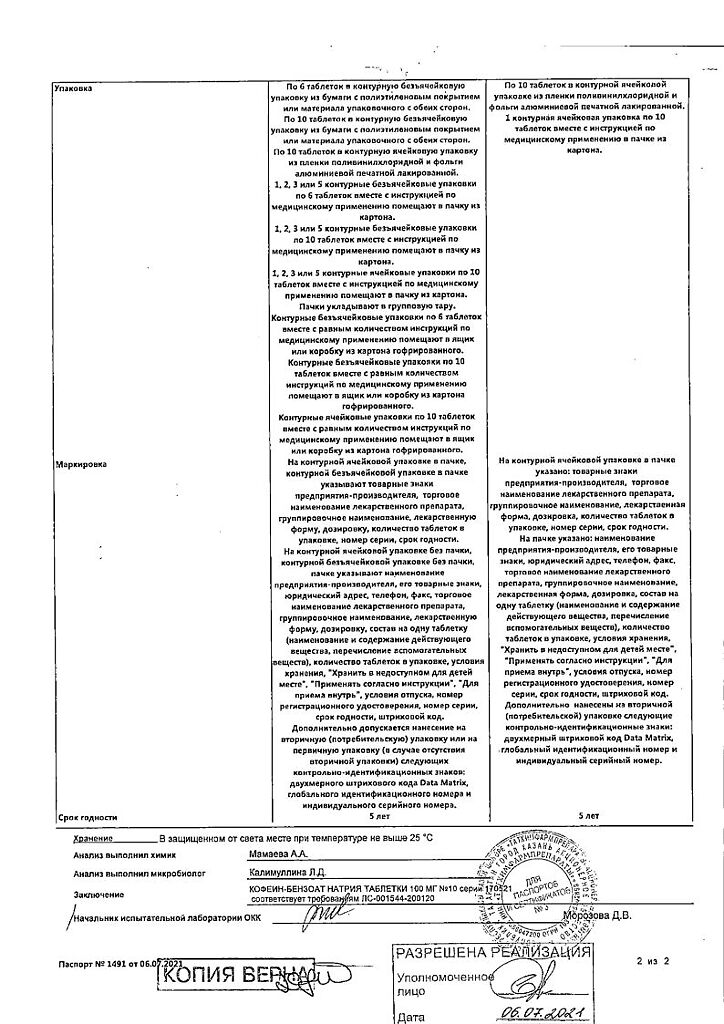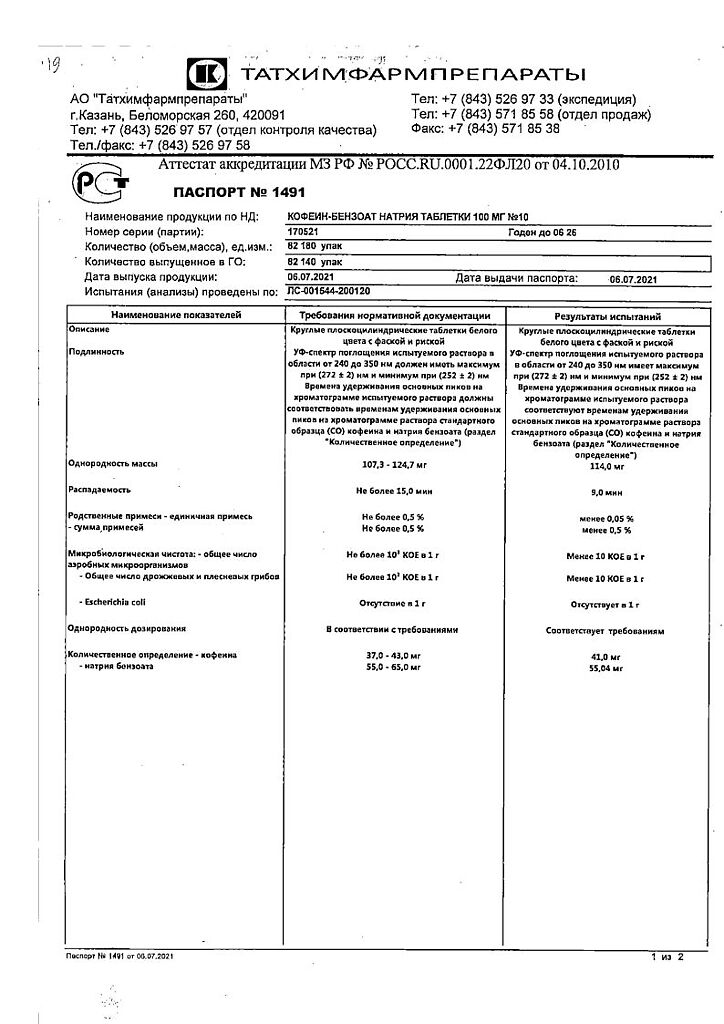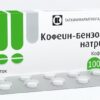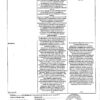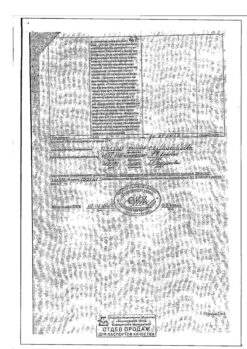No products in the cart.
Caffeine benzoate, tablets 100 mg 10 pcs
€4.91 €4.36
Description
Caffeine
Indications
Indications
Decreased mental and physical performance, drowsiness, headache of vascular origin (including migraine), moderate arterial hypotension.
Pharmacological effect
Pharmacological effect
Pharmacotherapeutic group
Psychostimulant
ATX code
N06BC01
Pharmacodynamics:
Caffeine is a methylxanthine that has a psychostimulant and analeptic effect.
Competitively blocks central and peripheral AT and A2 adenosine receptors. Inhibits the activity of phosphodiesterase in the central nervous system, heart, smooth and striated muscle tissue, adipose tissue, promotes the accumulation of cyclic adenosine monophosphate and cyclic guanosine monophosphate in them (this effect is observed when using only high doses of caffeine). Stimulates the centers of the medulla oblongata (respiratory and vasomotor), as well as the center of the vagus nerve, has a direct stimulating effect on the cerebral cortex. In high doses, it facilitates interneuronal conduction in the spinal cord, enhancing reflexes.
Increases mental and physical performance, stimulates mental activity, motor activity, shortens reaction time, temporarily reduces fatigue and drowsiness. In low doses, the stimulation effect predominates, and in large doses, the effect of depression of the nervous system predominates.
It quickens and deepens breathing, usually has a positive ino-, chrono-, batmo- and dromotropic effect (since the effect on the cardiovascular system consists of a direct stimulating effect on the myocardium and a simultaneous stimulating effect on the center of the vagus nerve, the resulting effect depends on the predominance of one or another action).
Stimulates the vasomotor center and has a direct relaxing effect on the vascular wall, which leads to dilation of the blood vessels of the heart, skeletal muscles and kidneys, while the tone of the cerebral arteries increases (causes a narrowing of the brain vessels, which is accompanied by a decrease in cerebral blood flow). Blood pressure changes under the influence of vascular and cardiac mechanisms of caffeine’s influence: with normal initial blood pressure, caffeine does not change or slightly increases it, but with arterial hypotension it increases it.
It has an antispasmodic effect on smooth muscles (including a bronchodilator effect), and a stimulating effect on striated muscles. Increases gastric secretory activity and diuresis (decreased reabsorption of sodium and water in the proximal and distal renal tubules, as well as dilation of renal vessels and increased filtration in the renal glomeruli).
Reduces platelet aggregation and histamine release from mast cells. Increases basal metabolism: increases glycogenolysis, increases lipolysis.
Pharmacokinetics:
When taken orally, absorption is good; occurs throughout the intestine. It is quickly distributed in all organs and tissues of the body, penetrates the blood-brain barrier and the placenta. The maximum concentration in blood plasma is achieved after 50-75 minutes; the half-life is 3.9-5.3 hours (sometimes up to 10 hours). Communication with blood proteins (albumin) – 15%. More than 90% is metabolized in the liver, in children of the first years of life up to 10-15%. Caffeine is metabolized in the liver (the main part is dimethylated and oxidized) with the formation of 5 metabolites. Caffeine and its metabolites are excreted by the kidneys (10% unchanged).
Special instructions
Special instructions
It should be borne in mind that sudden cessation of use may lead to increased inhibition of the central nervous system (drowsiness, depression).
The effect on the central nervous system depends on the type of nervous system and can be manifested by both excitation and inhibition of higher nervous activity.
Due to the fact that the effect of caffeine on blood pressure consists of vascular and cardiac components, as a result, both the effect of stimulating the heart and inhibition (weak) of its activity can develop.
Do not take before bedtime.
Impact on the ability to drive vehicles and machinery:
During the treatment period, care must be taken when driving vehicles and engaging in other potentially hazardous activities that require concentration and speed of psychomotor reactions.
Active ingredient
Active ingredient
Caffeine
Composition
Composition
For 1 tablet:
Active substance: caffeine sodium benzoate – 100 mg;
Excipients: potato starch – 15.77 mg, calcium stearate – 0.23 mg.
Pregnancy
Pregnancy
Use is only possible after consultation with a doctor if the expected benefit to the mother outweighs the potential risk to the fetus.
Contraindications
Contraindications
Hypersensitivity to the components of the drug (including other xanthines), anxiety disorders (agoraphobia, panic disorders), organic diseases of the cardiovascular system (including acute myocardial infarction, atherosclerosis), paroxysmal tachycardia, ventricular extrasystole, arterial hypertension, sleep disorders, children under 12 years of age.
With caution:
Glaucoma, increased excitability, old age, epilepsy and a tendency to seizures.
Side Effects
Side Effects
From the central nervous system: psychomotor agitation, anxiety, tremor, restlessness, headache, dizziness, epileptic seizures, increased reflexes, tachypnea, insomnia; with sudden withdrawal – increased inhibition of the central nervous system, increased fatigue, drowsiness, muscle tension.
From the cardiovascular system: palpitations, tachycardia, increased blood pressure.
From the digestive system: nausea, vomiting, exacerbation of peptic ulcer.
Other: nasal congestion, with prolonged use – addiction, drug dependence.
Interaction
Interaction
Caffeine is an adenosine antagonist (larger doses of adenosine may be required).
With the combined use of caffeine and barbiturates, primidone, anticonvulsants (hydantoin derivatives, especially phenytoin), it is possible to enhance metabolism and increase the clearance of caffeine; cimetidine, oral contraceptives, disulfiram, ciprofloxacin, norfloxacin – decreased metabolism of caffeine in the liver.. (slowing its excretion and increasing its concentration in the blood).
Caffeinated drinks and other drugs that stimulate the central nervous system – may cause excessive stimulation of the central nervous system.
Mexiletine – reduces caffeine excretion by 50%; nicotine – increases the rate of caffeine elimination.
Monoamine oxidase inhibitors, furazolidone, procarbazine and selegiline – large doses of caffeine (more than 300 mg / day) can cause the development of life-threatening cardiac arrhythmias or a pronounced increase in blood pressure.
Caffeine reduces the absorption of calcium preparations in the gastrointestinal tract.
Reduces the effectiveness of narcotic and sleeping pills.
Increases the excretion of lithium drugs in urine;
Accelerates absorption and enhances the effect of cardiac glycosides, increasing their toxicity. Concomitant use with beta-blockers may lead to mutual suppression of therapeutic effects; with β-adrenergic agonists – to additional stimulation of the central nervous system and other additive toxic effects.
Caffeine may decrease clearance; theophylline and possibly other xanthines, increasing the potential for additive pharmacodynamic and toxic effects.
Overdose
Overdose
Symptoms: gastralgia, agitation, anxiety, agitation, motor restlessness, confusion, delirium, dehydration, tachycardia, arrhythmia, hyperthermia, frequent urination, headache, increased tactile or pain sensitivity, tremor or muscle twitching; nausea and vomiting, sometimes with blood; ringing in the ears, convulsions (in case of acute overdose – tonic-clonic).
Caffeine in doses of more than 300 mg/day (including against the background of coffee abuse – more than 4 cups of natural coffee, 150 ml each) can cause anxiety, tremor, headache, confusion, extrasystole.
Treatment: gastric lavage; – if caffeine was taken in the last 4 hours at a dose of more than 15 mg/kg and there was no vomiting caused by caffeine; taking activated carbon, laxatives; for hemorrhagic gastritis – administration of antacid medications and gastric lavage with ice-cold 0.9% sodium chloride solution; maintaining pulmonary ventilation and oxygenation; for seizures – intravenous diazepam, phenobarbital or phenytoin; maintaining water and electrolyte balance.
Storage conditions
Storage conditions
In a dry place, protected from light, at a temperature not exceeding 25 ° C.
Keep out of the reach of children.
Shelf life
Shelf life
5 years. Do not use after the expiration date stated on the package.
Manufacturer
Manufacturer
Tatchimpharmpreparaty, Russia
Additional information
| Manufacturer | Tatkhimpharmpreparaty, Russia |
|---|---|
| Medication form | pills |
| Brand | Tatkhimpharmpreparaty |
Other forms…
Related products
Buy Caffeine benzoate, tablets 100 mg 10 pcs with delivery to USA, UK, Europe and over 120 other countries.

